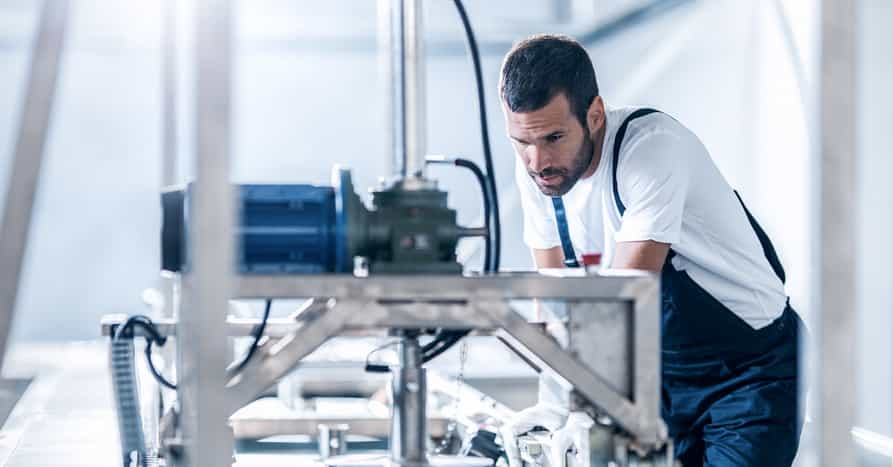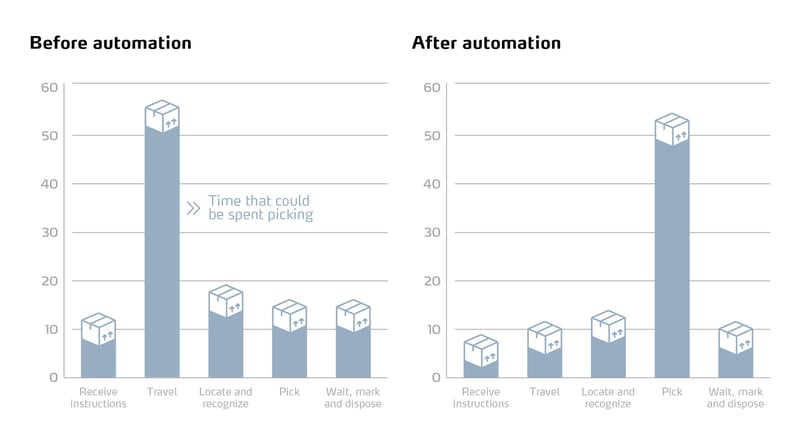Updated April 7, 2025
The manufacturing industry is at a crossroads.
On one side, demand for goods continues to rise.
On the other, a massive labor shortage threatens productivity, efficiency, and long-term competitiveness.
Employers are scrambling to fill open roles, battling high turnover, rising wages, and a shrinking pool of skilled workers—all while trying to keep their operations running smoothly.
While some hope the labor market will bounce back, the data tells a different story: this isn’t a temporary setback—it’s a systemic shift. Baby Boomers are retiring in droves, younger generations are less interested in industrial work, and the gap between job openings and available talent keeps growing wider.
But there’s good news: automation isn’t just a way to survive this workforce crisis—it’s a way to thrive in spite of it.
In this article, we’ll explore the root causes behind the manufacturing labor shortage, the real numbers behind the crisis, and how modern automation—especially Automated Storage and Retrieval Systems (ASRS)—can help manufacturers not only fill the gap but unlock new levels of efficiency, safety, and productivity.
Labor Shortage in Manufacturing Statistics
If you're here, you probably already know that the manufacturing and warehousing sectors are in the midst of an unprecedented labor crisis. Despite rising wages and aggressive hiring efforts, companies across the U.S. are struggling to fill critical roles—leading to production delays, increased costs, and operational inefficiencies.
The labor shortage may also lead many companies to wonder whether reshoring is the right solution to mitigate tariffs and other global economic challenges.
This isn’t just anecdotal. The data paints a stark picture.
Let’s review the latest manufacturing labor statistics to understand the full scope of the problem:
- As of December 2023, there were 9.5 million job openings in the U.S. but only 6.5 million unemployed workers—a gap of 3 million.
- In manufacturing alone, 600,000 jobs remained unfilled as of early 2024. That number is expected to increase to 2.1 million by 2030.
- The labor force participation rate (LFPR) has dropped from 67.3% in 2000 to 62.5% in 2024—meaning millions fewer people are even looking for work
- Baby Boomer retirements are accelerating the crisis, with 10,000 workers aging out daily. This group represents a particular crisis gap for the manufacturing sector as these leaders take their “’tribal knowledge’ - the deep practical understanding of equipment and processes,” according to Modern Materials Handling.
- The quit rate in manufacturing is especially high, reaching a record-breaking peak at 3.0% in November of 2021, a nearly 60% jump from pre-pandemic levels.
- Around 40% of manufacturing workers leave within the first year, citing physically demanding conditions and low job satisfaction
- According to the U.S. Department of Labor’s (DOL) Bureau of Labor Statistics (BLS), companies in the Warehousing and Storage subsector (North American Industry Classification System / NAICS 493), have seen rising labor compensation rates (~32% over 5 years) and labor hours worked have decreased (~2% over 5 years).
- Even with unemployment returning to more normal levels post pandemic – when surveyed, more than 250 top logistics and supply chain managers said their three biggest workforce challenges revolve around labor:
- Finding and keeping qualified/skilled/dependable workers (62%)
- Increasing workforce productivity (57%)
- Controlling labor costs (45%)
"It's near impossible to find the labor that you need. It's one of the biggest challenges facing DCs today. When you do find candidates, the quality is lacking. They’ll be working for six months and then just no-show one day." Christina Dube, Director of Marketing, Americas for Kardex
For a deeper dive: Attracting Millennials to Your Warehouse Workforce
Why is There a Labor Shortage in Manufacturing?
These statistics are alarming. But they don’t paint the full picture as to why there’s such a massive labor crisis in manufacturing. Let’s zoom out and take a look at why so many manufacturers are struggling to fill open roles.
The first important factor to consider is the massive emerging gap between the available workforce (the red line) vs the total job openings (the blue line).
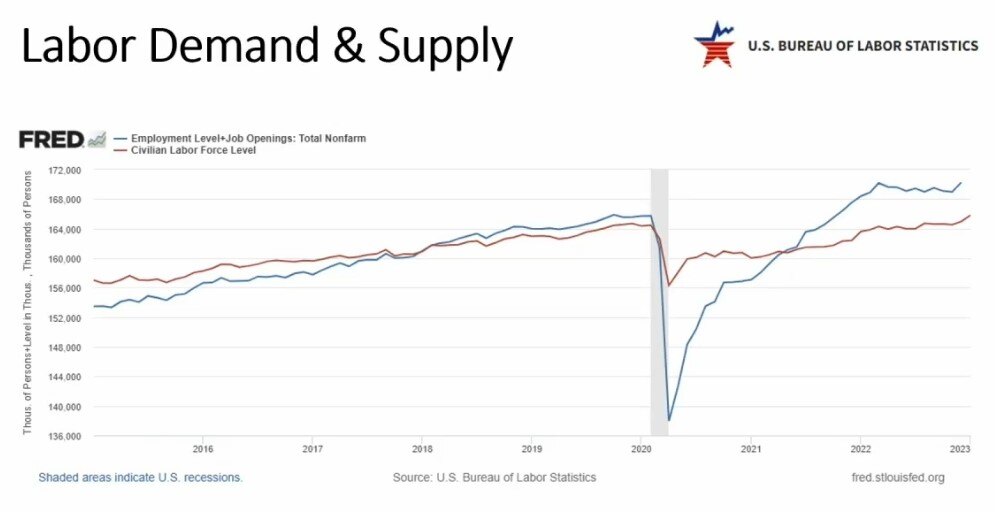
As you can see, these lines followed each other pretty closely until May of 2021, where the gap begins to stagger and grow further away from each other. In December of 2022, there were 4 million more jobs than available workers.
Never before has there been such a disparate difference between available jobs and available workforce. This gap has hit the warehousing and manufacturing industry particularly hard.
This issue is compounded by the extremely high quit rate for the warehousing sector.
The U.S. Bureau of Labor Statistics lists warehousing has having the 5th highest quit rate with a staggering 2.7% as of 2021.
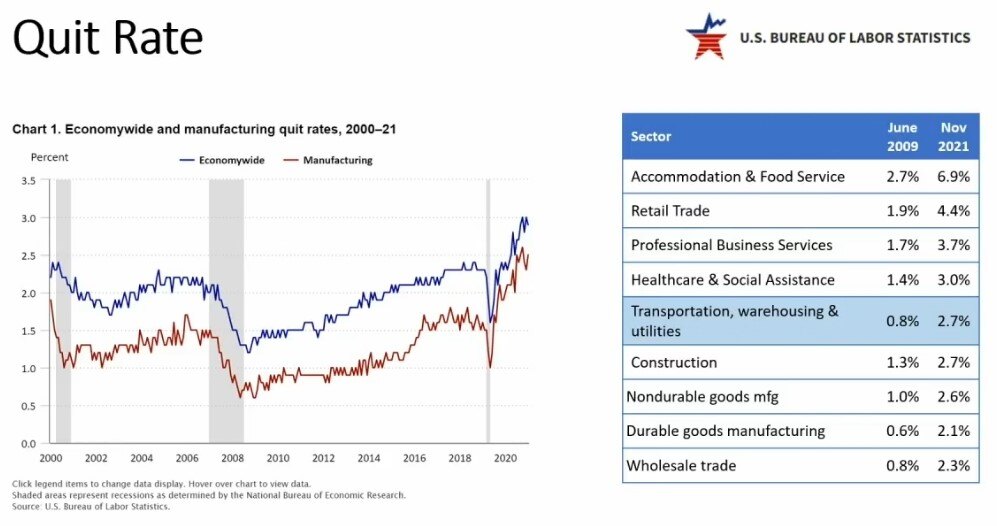
But what’s going on behind the scenes here? Why are so many manufacturing and warehousing professionals leaving the job market?
We can make some educated guesses based on available data.
1. Demographic Shifts
The manufacturing workforce faces a perfect storm of aging workers and declining replacement rates. Each day, 10,000 Baby Boomers retire, taking decades of institutional knowledge with them. This "Silver Tsunami" hits skilled trades particularly hard.
Compounding this issue, the U.S. fertility rate has plummeted 20% since 2007 to just 1.64 births per woman - far below the 2.1 needed for population stability (CDC data). The result is fewer young workers entering industrial career pipelines. Industry experts project this demographic double-whammy could leave 85% of manufacturers struggling to fill roles by 2030, with the most severe shortages in critical manufacturing sectors.
2. Changing Worker Preferences
The pandemic fundamentally reshaped worker expectations, putting traditional manufacturing at a disadvantage. McKinsey research shows 83% of workers now prioritize schedule flexibility over pay raises, yet most manufacturing jobs still require rigid, onsite shifts.
Physical demands present another hurdle. With warehouse work showing a 30% increase in worker injuries as the industry grows. Younger workers increasingly reject roles involving heavy lifting or repetitive strain.
Perhaps most damaging is the perception gap - only 14% of Gen Zers say they would consider industrial work as a career and only 26% say they’d consider it as a short-term career. Technology is a driving motivator for this upcoming generation. And they are likely unaware that modern factories routinely use AR, robotics, and AI. This creates a vicious cycle where emerging top talent overlooks the industry.
3. Skills Gap
The technical demands of modern manufacturing have dramatically outpaced workforce preparation. While more plants utilize automation, IoT sensors, and predictive analytics, MIT research shows that digital literacy of new machines will be a barrier to adoption and growth.
Educational pipelines are failing to keep pace. There are currently over 500,000 unfilled manufacturing certifications. Where companies once provided extensive on-the-job training, many now expect hires to arrive job-ready - yet only 34% of schools offer manufacturing-relevant curricula according to the Manufacturing Institute.
Automation Benefits for Manufacturing Labor Shortages
These workforce challenges represent fundamental, irreversible trends rather than temporary fluctuations. Rather than struggling to hire and retain workers, many manufacturers are turning to automation to optimize their existing workforce.
Automated storage and retrieval systems (ASRS) are designed to reduce dependency on manual labor while increasing efficiency, accuracy, and throughput.
1. Eliminate Travel Time
In a conventional storage system, manual fulfillment can account for as much as 60-65% of a workers’ time. However, with automation, goods are brought directly to the worker operating on the “goods to person” principle. This eliminates the need to walk and search for a part within the warehouse, saving time and increasing productivity. Although we know most baby boomers like their daily walks, taking them at work isn’t good for productivity.
2. Improved Ergonomics
Stop making your workers bend down to retrieve an item or climb a ladder to reach the highest shelf. This is just an accident or workers comp claim waiting to happen. Instead, automated solutions deliver goods to an operator at an ergonomic height, known as the “golden zone” which is waist height. No more bending and reaching, thus eliminating those worker injuries.
3. Reduced Search Time
Ever wonder how much time it takes for someone to find the correct item to pick once they reach the storage location? Probably longer than you want to know. Automated storage and retrieval systems can be equipped with light-directed technology to quickly and easily guide the operator to the appropriate pick location. Eliminating all of that search time and boosting accuracy.
4. Prevent Pick Errors
The opportunity for human error is pretty significant in a manual picking operation. Not only do automated solutions have indicator lights, as mentioned previously, they also can be integrated with message center to communicate with the operator. This tells the operator the exact part number and quantity to be picked.
5. Optimize Picks
It can be difficult for an individual operator to manually pick more than one order at a time, resulting in maybe 50 lines per hour. For faster throughput, dynamic storage solutions utilize inventory management software to sequence picks which results in faster picking times. In addition, batch picking, grouping orders with common items together can increase throughput by as much as 200%!
6. Faster Training
A temporary worker unfamiliar with a facility’s layout can be stationed at an automated storage and retrieval system for highly productive picking after just a brief introduction to the equipment.
All of these functions can optimize an existing labor force, increasing productivity from 200% to 600%.
Because an automated solution enables just one worker to handle the picking assignments of multiple operators, as many as two-thirds of a facility’s workforce can be reassigned to other, non-picking tasks, without a loss of throughput.
"These automated systems work well with others, increase productivity by two-thirds, and most importantly—they won’t no-show on you." Christina Dube, Director of Marketing, Americas for Kardex
Alternately, implementing these automated storage solutions can compensate for a scarce and declining labor pool—a trend that will only progress as baby boomers continue to retire, and take their valuable skills with them.
All of these functions can optimize an existing labor force, increasing productivity from 200% to 600%. Because an automated solution enables just one worker to handle the picking assignments of multiple operators, as many as two-thirds of a facility’s workforce can be reassigned to other, non-picking tasks, without a loss of throughput. Alternately, implementing these automated storage solutions can compensate for a scarce and declining labor pool—a trend that will only progress as baby boomers continue to retire, and take their valuable skills with them.
But what technology are leading manufacturers relying on to improve productivity for their warehouses with less labor?
Let’s take a deep-dive into the specific solutions you can utilize on the warehouse floor.
ASRS Technology Solutions for Labor Shortages

1. Vertical Buffer Module - Eliminates Manual Material Handling
The Vertical Buffer Module (VBM) is a tote-based ASRS that automatically delivers stored items to an ergonomic workstation. Instead of workers walking through aisles searching for parts, the system brings inventory directly to them.
Vertical Buffer Module Labor Benefits:
- Reduces walking & search time – Workers no longer waste time retrieving items; the system does it for them.
- Minimizes fatigue & injury risk – Eliminates repetitive bending, lifting, and carrying.
- Improves order accuracy – Since workers pick from a single access point, mispicks decrease.
- Allows for batch picking – Multiple orders can be fulfilled simultaneously, increasing productivity per worker.
Best for: High-volume operations where workers handle medium-sized items (e.g., e-commerce, spare parts distribution).
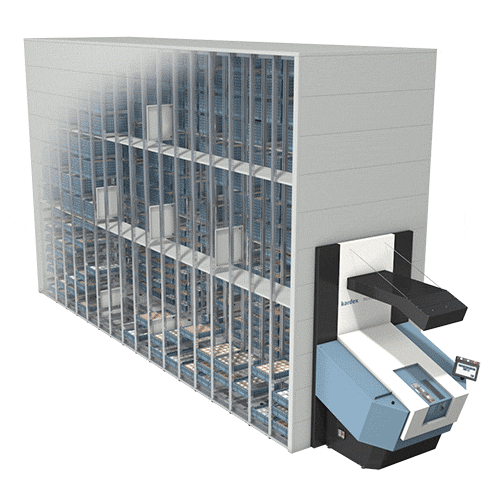
Download the Vertical Buffer Module Quick Facts PDF
2. Vertical Lift Module - Maximizing Storage & Efficiency
The Vertical Lift Module (VLM) is a fully-automated storage system that uses a robotic inserter/extractor to retrieve trays of goods. It dynamically adjusts storage heights based on product size, optimizing space while keeping inventory organized.
Vertical Lift Module Labor Benefits:
- Cuts labor needs by 2/3 – One operator can manage what previously required multiple pickers.
- Dramatically reduces training time – Simple touchscreen operation means new hires can be productive immediately.
- Enables high-density storage – More inventory in less space means fewer workers needed for stock management.
- Supports FIFO/FEFO picking – Critical for industries like pharmaceuticals or food where expiration dates matter.
Best for: Facilities with medium-to-high SKU counts needing fast, precise retrieval (e.g., industrial parts, medical supplies).
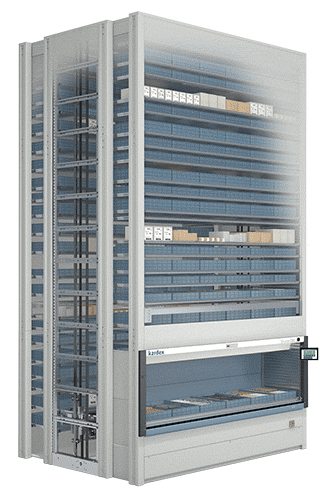
Download the Vertical Lift Module Quick Facts PDF
3. Vertical Carousel Module - Fast Access in Compact Spaces
The Vertical Carousel Module (VCM) is a rotating storage system that delivers parts via the shortest possible path. It’s ideal for facilities with low ceilings (under 18 ft.), where traditional ASRS might not fit.
Vertical Carousel Module Labor Benefits:
- Delivers items in seconds – Workers stay in one place while the system brings items to them.
- Reduces staffing needs – One operator can manage what previously required multiple pickers.
- Improves ergonomics – No ladders, no bending—just easy access at waist height.
- Supports batch picking – Workers can fulfill dozens of orders in a single cycle.
Best for: Small-to-medium operations with limited space and similar sized parts (e.g., tool cribs, maintenance depots, retail backrooms).

Download the Vertical Carousel Module Quick Facts PDF
Looking for more? Read about 8 Types of Automated Storage and Retrieval Systems
Automation Success Stories for Labor Shortages
Can manufacturers really see success with automation? Here are three real-life examples of how automation with ASRS led to tangible labor benefits.
1. VanMeter - When Growth Outpaced Hiring
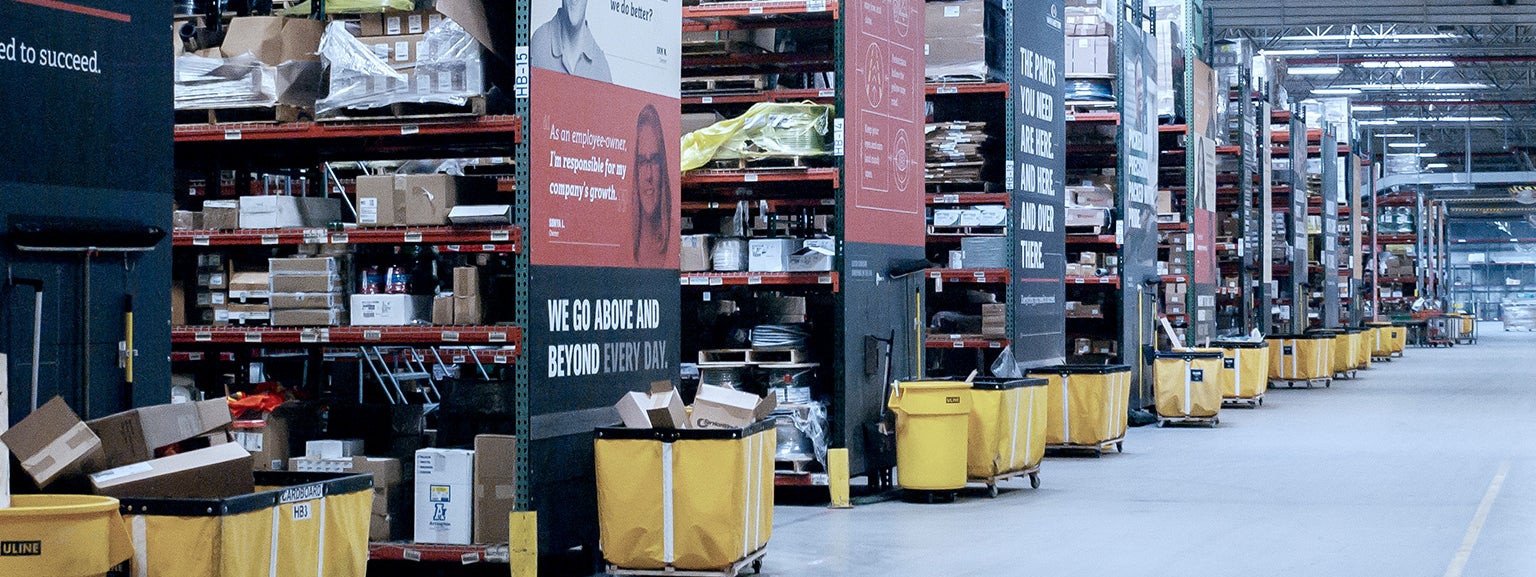
VanMeter, a family-owned electronics distributor in Cedar Rapids, Iowa, was bursting at the seams. Their 300,000 sq. ft. warehouse buzzed with activity, but no matter how many "Now Hiring" signs they posted, they couldn't find enough workers to keep up with 20% annual growth.
Temporary workers cycled through constantly, and managers spent more time training replacements than improving operations. Order accuracy suffered, and the high-bay racking system forced pickers to waste hours climbing ladders and searching aisles.
VanMeter installed 18 vertical lift modules (VLMs) in two facing rows, connected by a smart conveyor system. Now, when an order comes in:
- The conveyor routes totes to the correct zone
- VLMs deliver parts directly to pickers at waist height
- Workers batch-pick multiple orders simultaneously
The Payoff?
- 21% labor costs slashed by eliminating temp workers
- 4,500 order lines processed daily—with the same core team
Read the full case study here: Case Study: Van Meter
2. Hauni - Addressing Overtime with ASRS
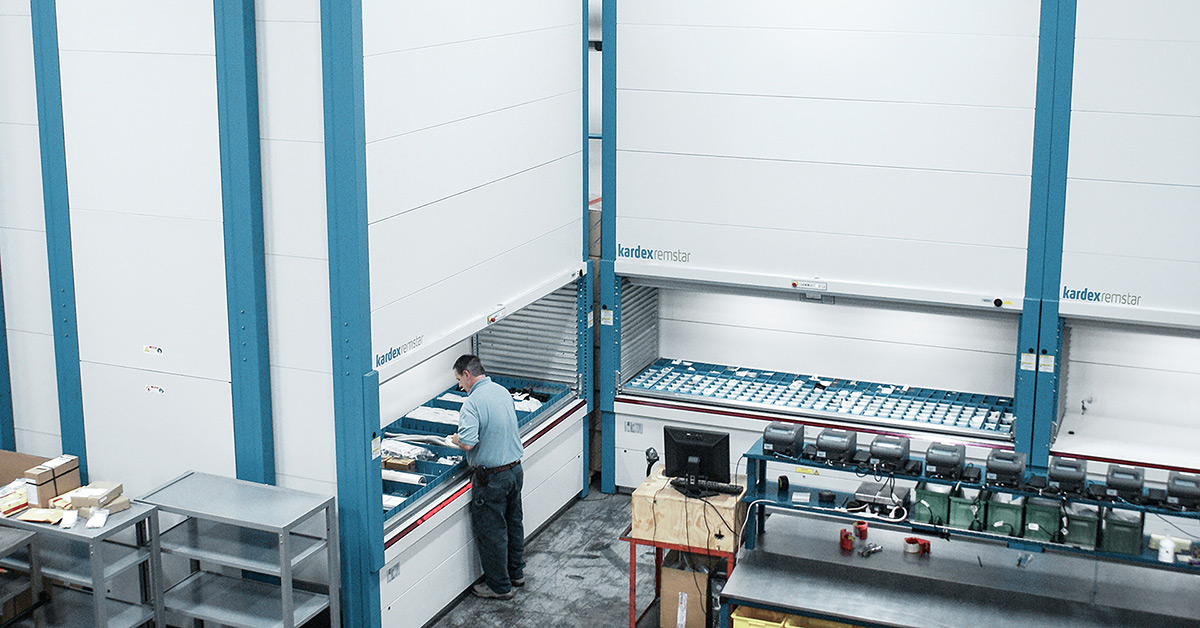
At Hauni's 150,000 sq. ft. production equipment facility in Richmond, overtime had become a way of life. Five vertical lifts arranged in a U-shape couldn't keep up with demand, forcing employees to work grueling extra hours to hit targets.
The Pain Points:
Workers averaged 3,200 overtime hours/year. This fatigue led to errors in critical bag-and-tag operations. Not to mention, hiring surges during peak seasons only created turnover later. This led to a tedious labor cycle.
Hauni expanded to seven VLMs with integrated batch stations, allowing:
- 18 orders picked simultaneously
- Automatic label printing at each workstation
- Real-time inventory tracking
The Results?
- 47% fewer workers needed in the storage area
- $442,000 saved annually on labor
- Overtime eliminated completely
Read the full case study here: Case Study: Hauni
TSC - Fluctuating Product Demand With High-Security Products
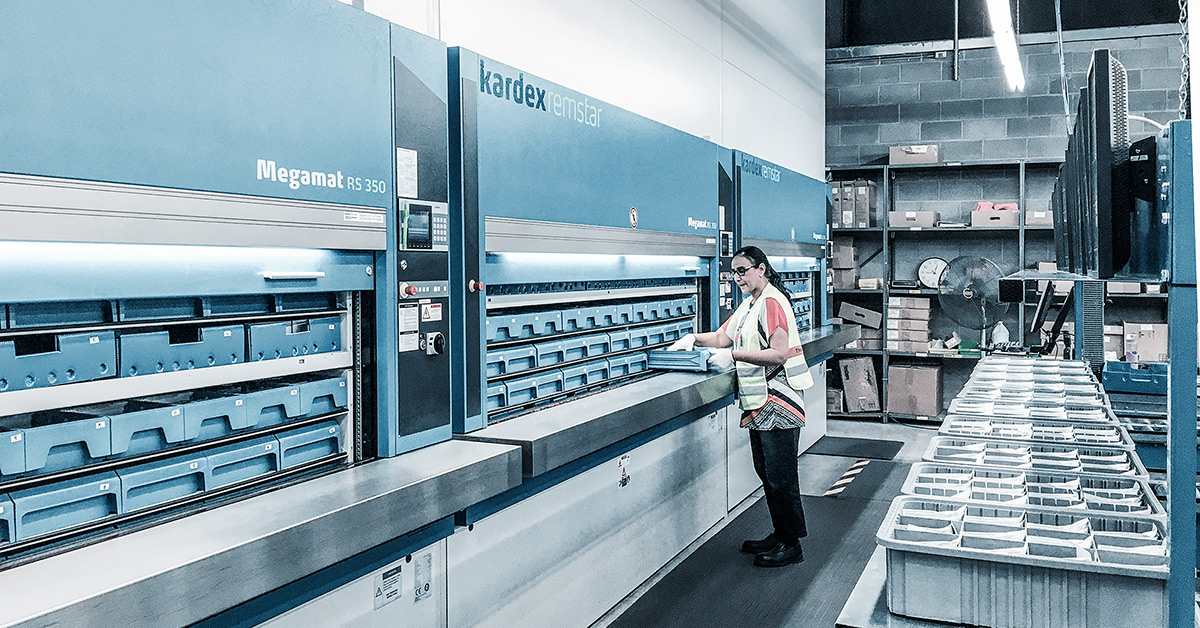
Today's Shopping Choice (TSC), a Canadian online retailer, faced a unique challenge.
This created a logistical nightmare in their jewelry department. Managing over 8,000 small, high-value SKUs that required secure storage in a locked cage with 24/7 security. With demand fluctuating wildly based on daily promotions.
A slow-moving necklace could become a top seller overnight when featured on their homepage.
Their team of 22 pickers constantly scrambled to fulfill orders, creating bottlenecks and inefficiencies in what should have been a streamlined operation.
The manual picking process was not only labor-intensive but also created security concerns and inventory control challenges in their fast-paced e-commerce environment.
Three vertical carousels transformed their process:
- Workers scan 120 orders at a time into numbered bins
- Carousels rotate to present exact items needed
- Pick-to-light systems guide precise fulfillment
The Impact?
- 54% labor reduction (from 22 to 10 pickers)
- 600% productivity jump (240 lines/hour vs. 40 previously)
Read the full case study here: Case Study: TSC
The Human Impact of Automation for Your Labor Force
A persistent myth about automation is that it eliminates jobs. In reality, forward-thinking manufacturers use automation to transform jobs—not terminate them. The data shows that when implemented strategically, automation upgrades roles, reduces turnover, and creates more fulfilling work.
Workers in traditional warehouses and factories often spend their time on repetitive, physically-demanding tasks like walking aisles, lifting heavy items, and searching for parts.
This leads to chronic issues:
- Sky-high turnover (some facilities see 40% of new hires quit within a year)
- Wasted training investments (2-3 months to train pickers who may abruptly leave, often without notice)
- Chronic fatigue and injuries from repetitive motions
While it’s true that automation can reduce the number of workers on the warehouse floor, those workers don’t have to be let go. They can be promoted to higher-value roles like quality control, equipment maintenance, customer service, and more. This shifting of roles can have tangible benefits across your organization.
- Upskilled workers can learn to manage robotics and analytics systems, leading to a more appealing work environment for Gen Z workers.
- New hires can become productive immediately, thanks to intuitive interfaces and easy-to-use technology.
- Turnover can plummet – because jobs are less physically taxing and there are clear pathways for growth on the floor. This also enables you to maintain your institutional knowledge instead of constantly rehiring and retraining new candidates.
"Automation isn’t taking jobs—it’s supporting existing labor. We’re making employees more efficient, and you can reallocate people to other areas of the plant." — Christina Dube, Director of Marketing, Americas - Kardex
Labor isn’t just hourly wages—it’s a layered expense that many companies underestimate.
Understanding the True Cost of Labor
Let’s break down the real numbers behind warehouse picking labor and how automation can transform those costs.
The Bureau of Labor Statistics (BLS) categorizes inventory pickers as "Warehousing and Storage – Stockers and Order Fillers," with:
- National average hourly wage: $21.13. This is a 35% increase from just 10 years ago.
- Base annual salary: $43,950
- Fully burdened cost (with benefits): $59,772 per worker (base wage + 36% for benefits, insurance, and taxes)
These costs add up quickly. A facility with 10 pickers spends nearly $600,000 annually—before overtime, turnover, or training expenses.
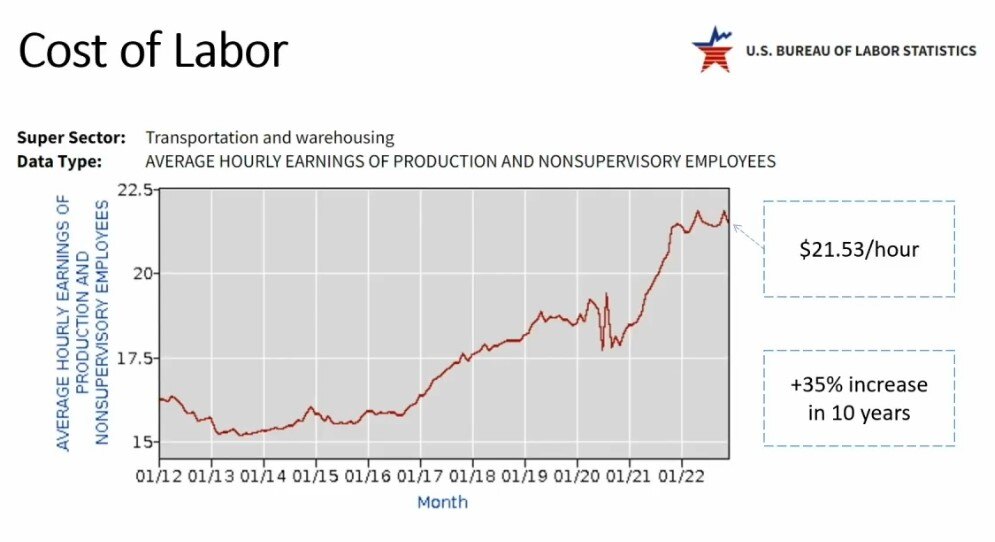
Automated Storage and Retrieval Systems (ASRS) like Kardex’s vertical lift modules allow companies to:
- Reassign workers – Every employee moved from manual picking to higher-value tasks saves $59,772/year
- Reduce overtime – Eliminating just 1,000 overtime hours/year saves ~$31,600 (at 1.5x wage rates)
- Slash turnover costs – Replacing one picker can cost 30-50% of their salary (18,000–18,000–30,000)
Example: A company that reallocates just 5 pickers through automation saves:
- $298,860/year in direct labor costs
- $90,000+ in avoided turnover/training
- Unmeasured gains from improved accuracy and throughput
Want to calculate the true ROI of automated storage for your warehouse? Use our free cost justification calculator here to examine labor, space, and accuracy savings.
Ready to talk about how to implement ASRS to save on labor in your facility? Contact us today to learn more.

